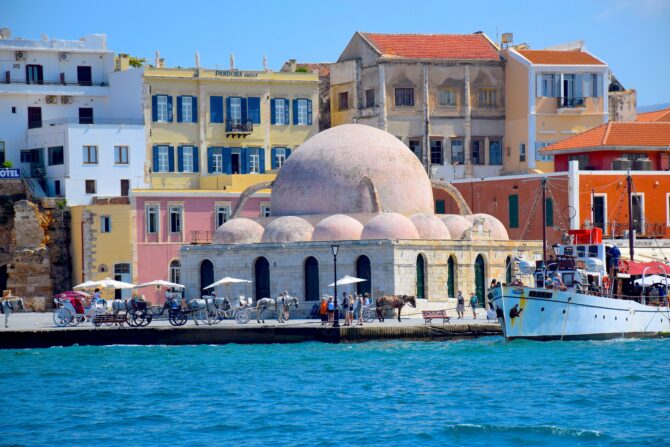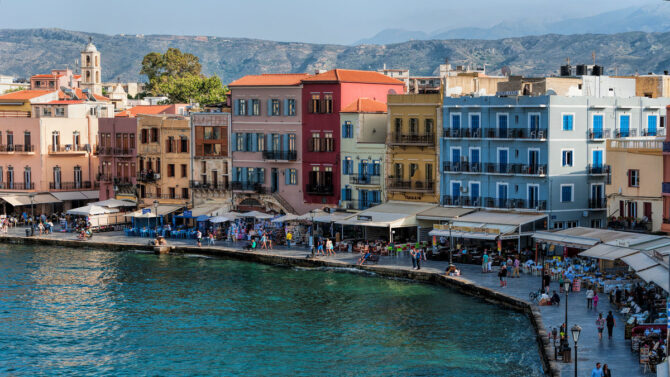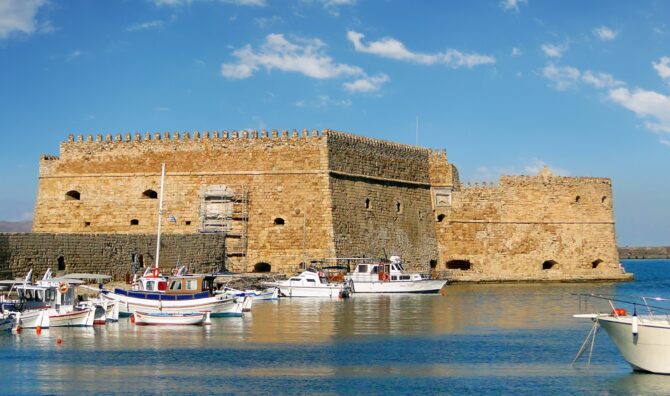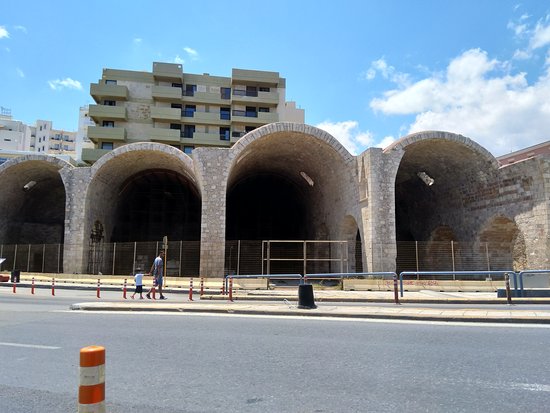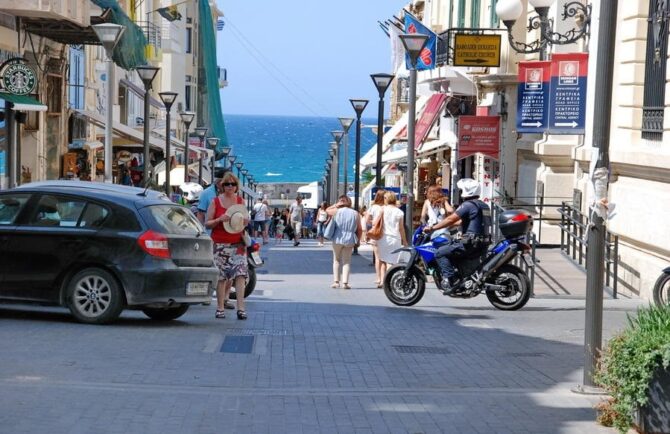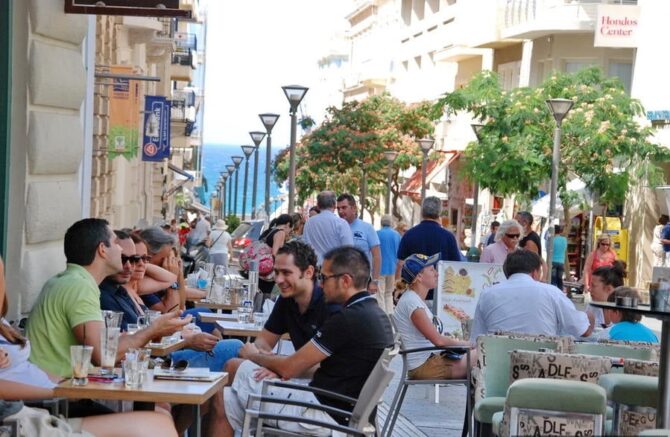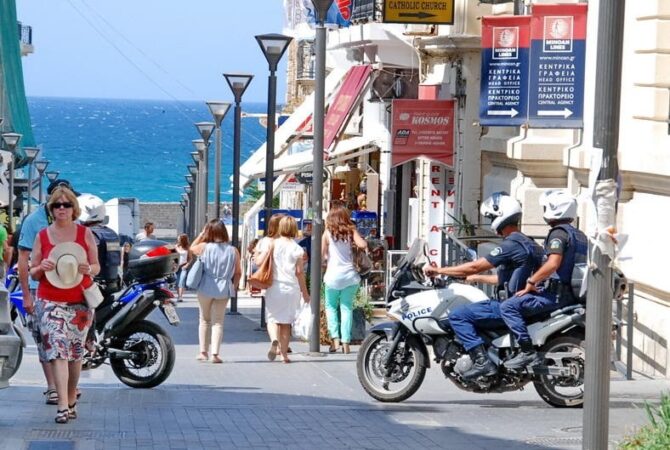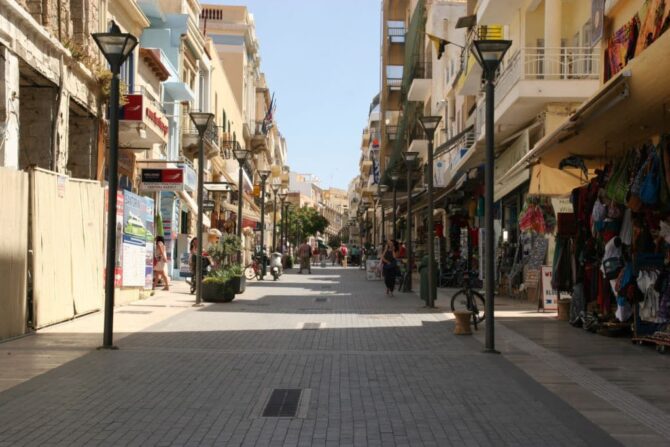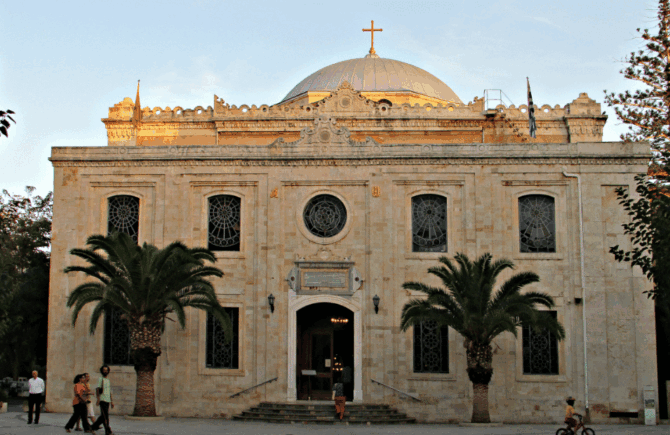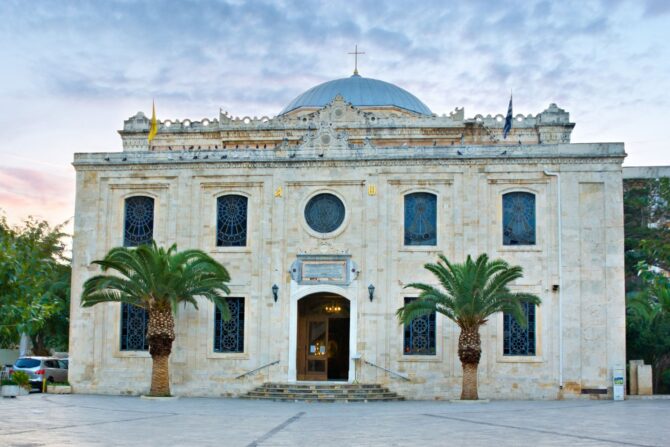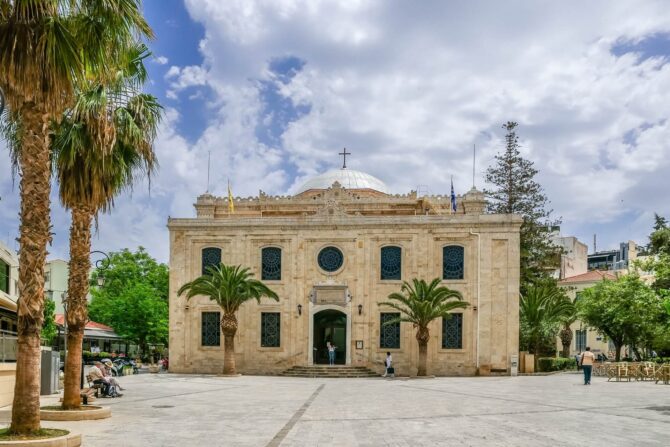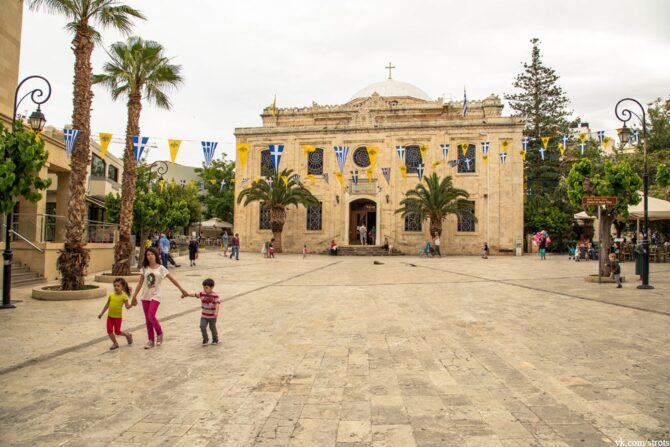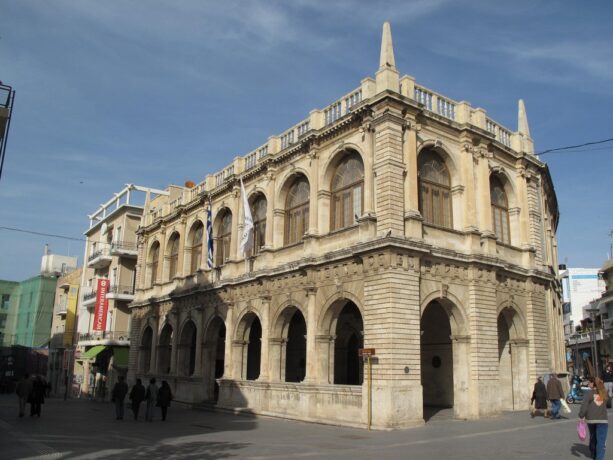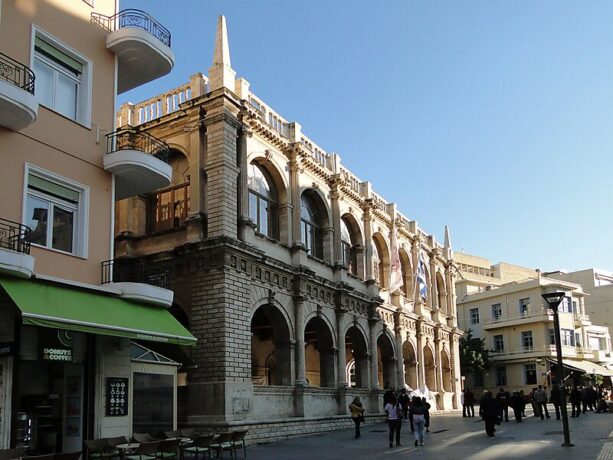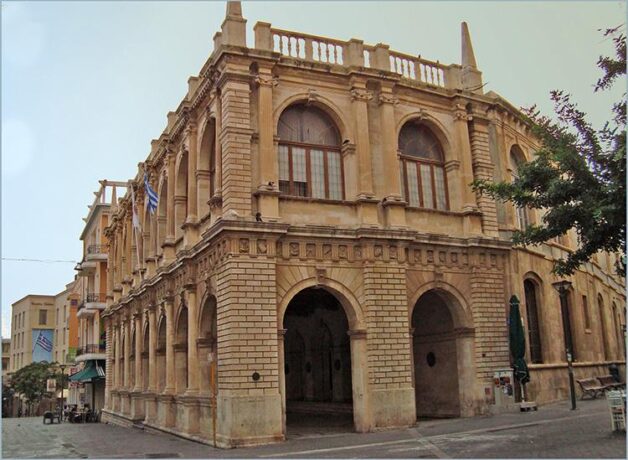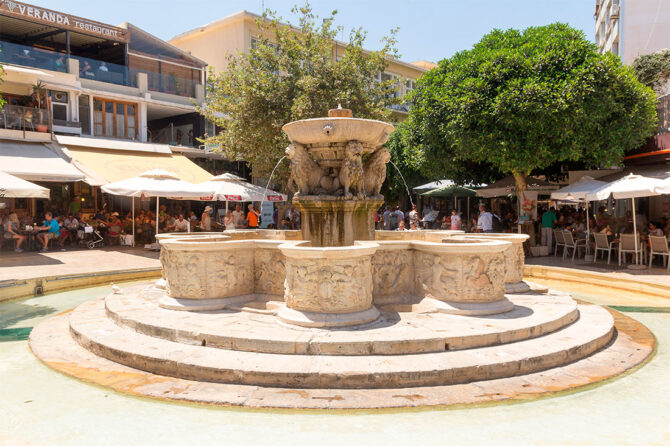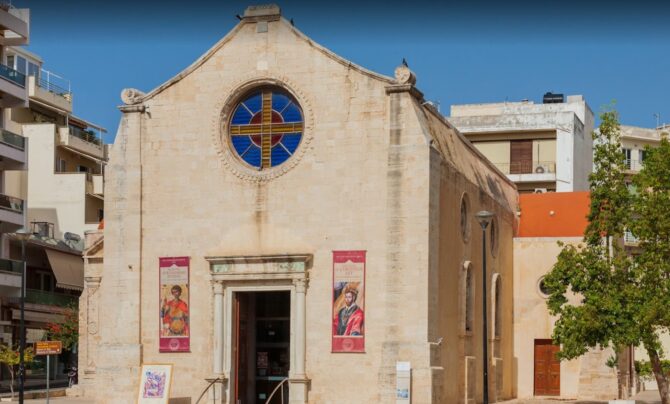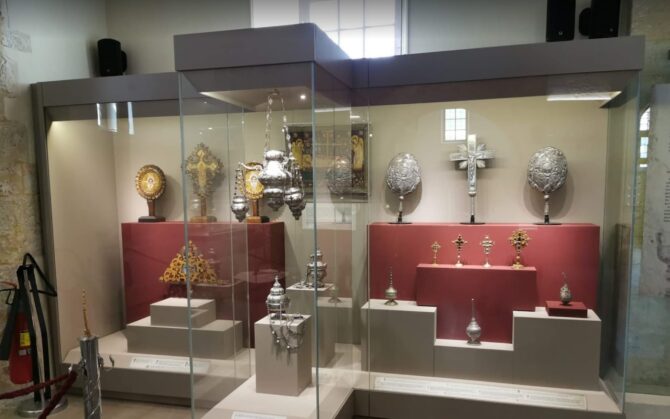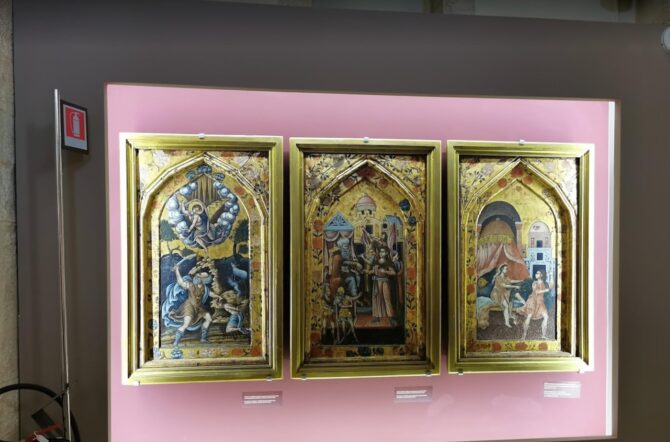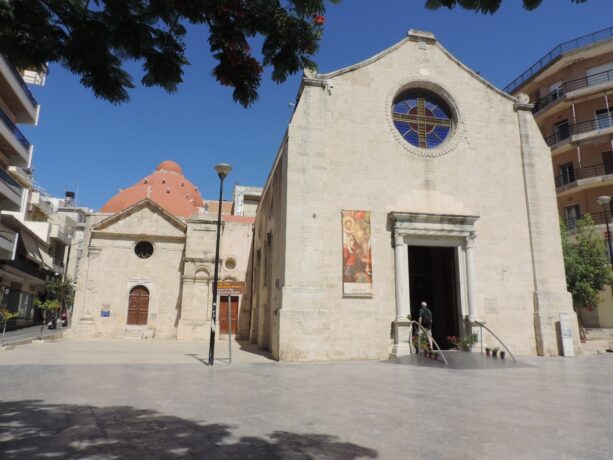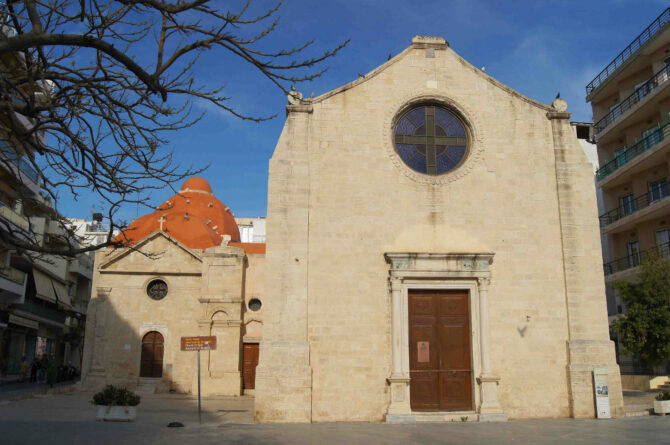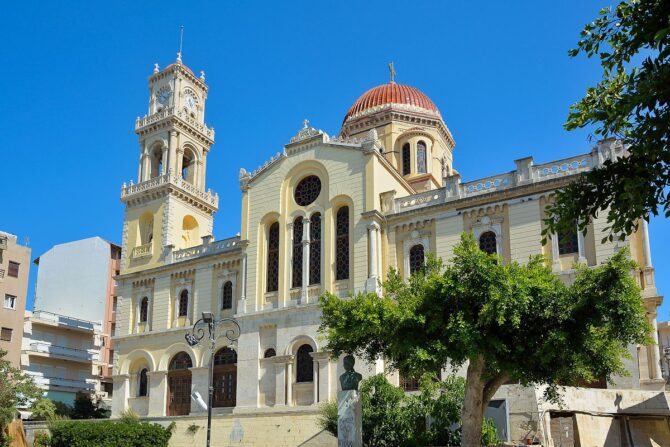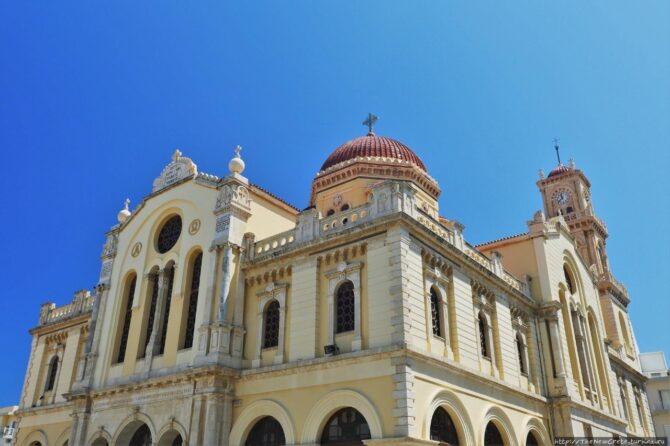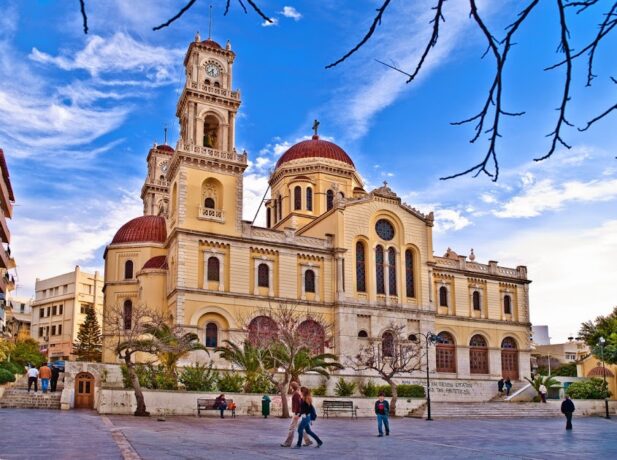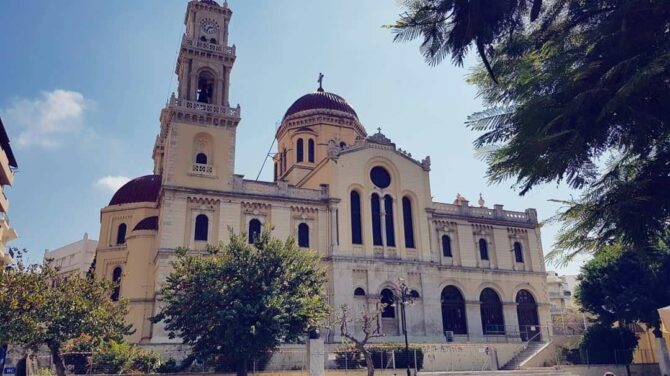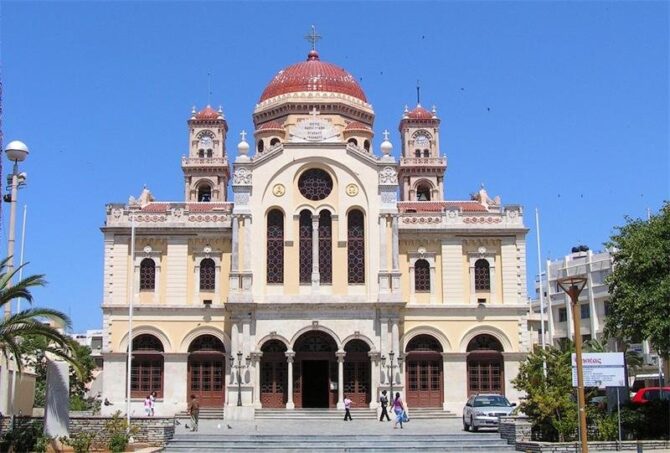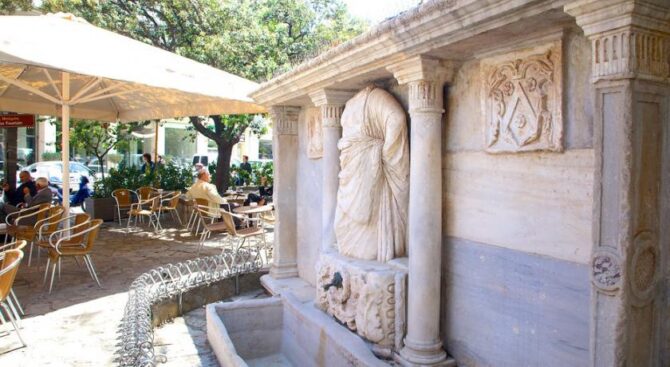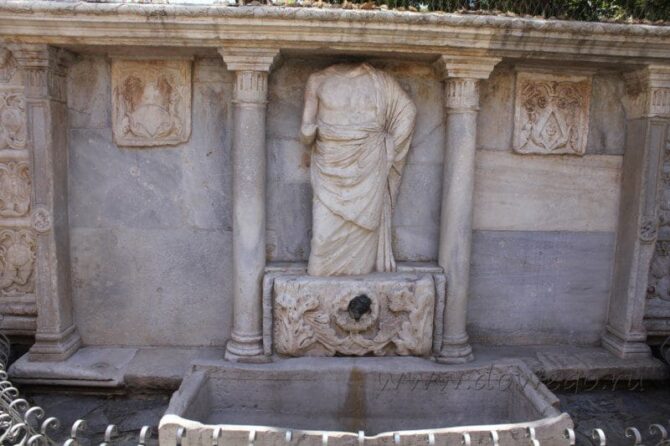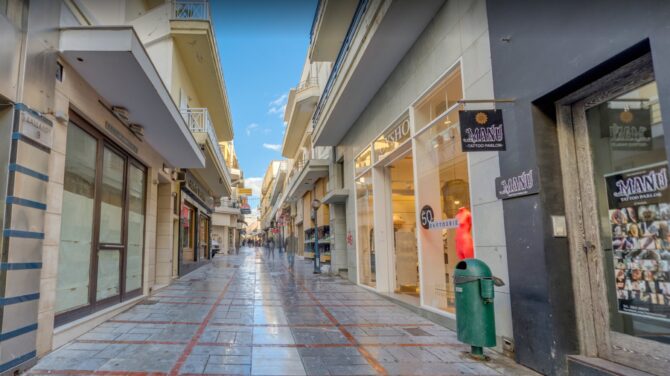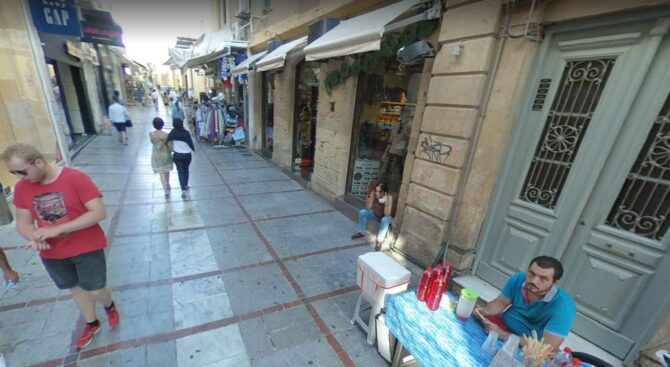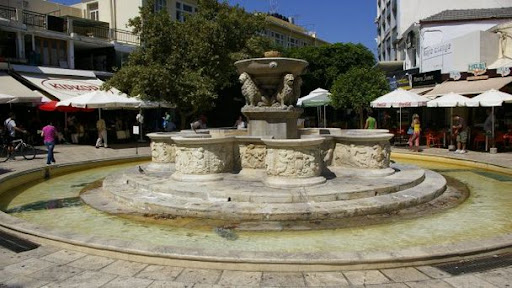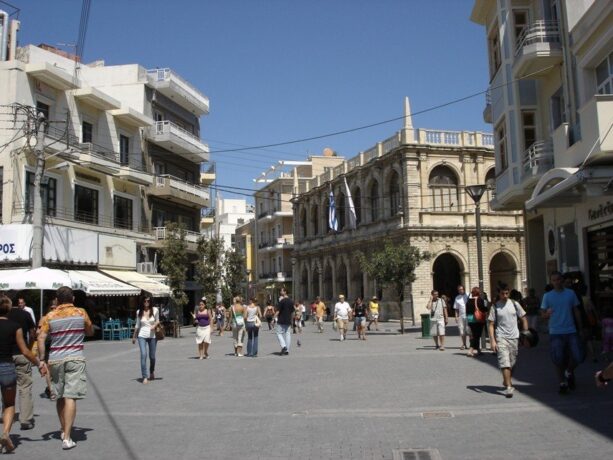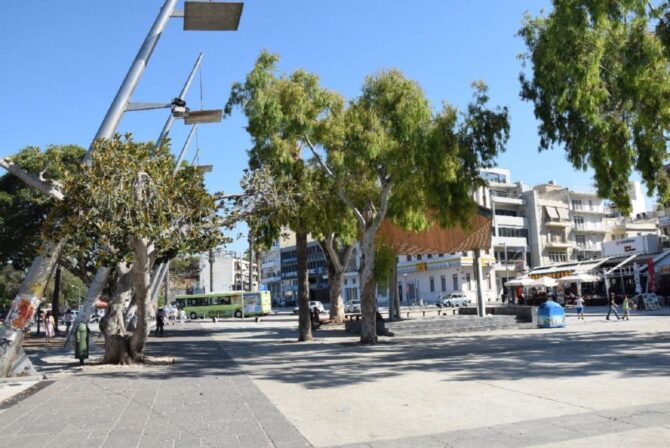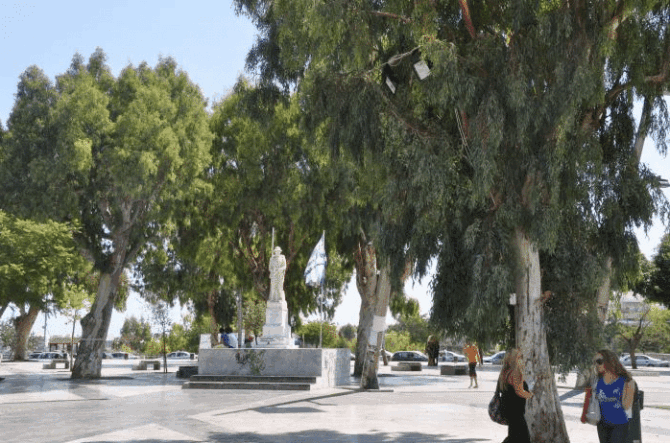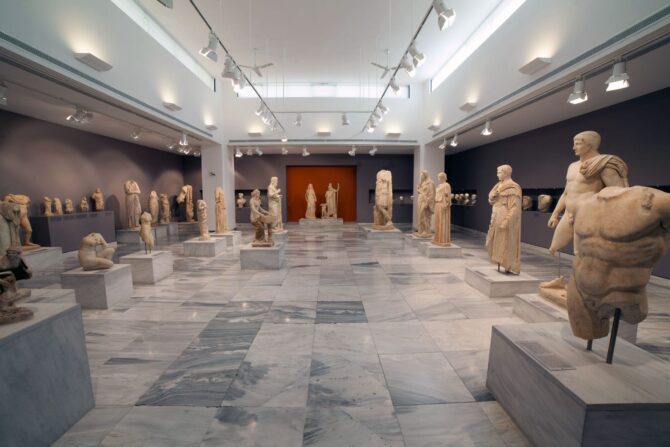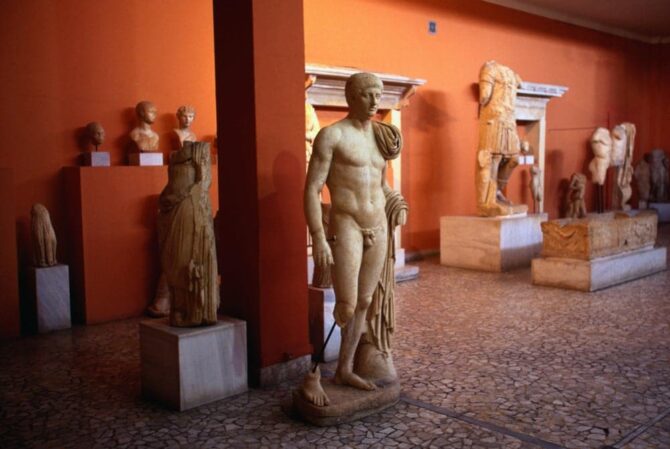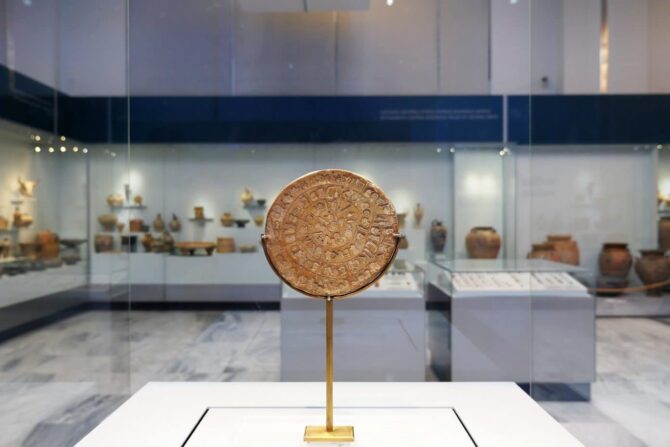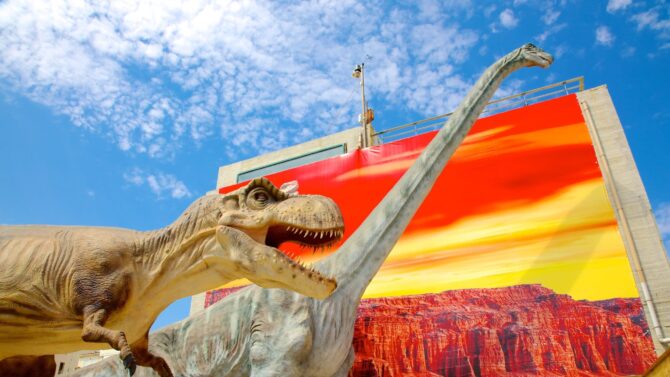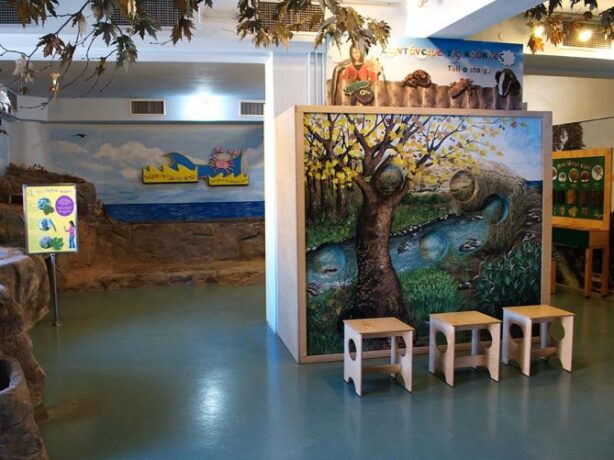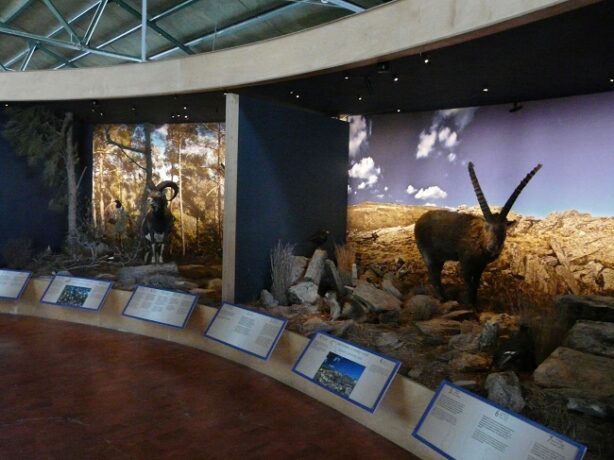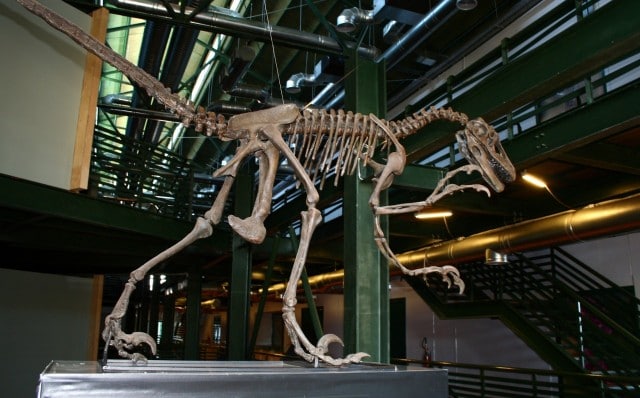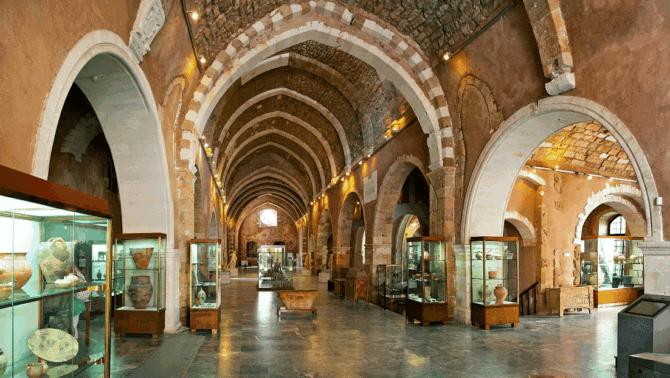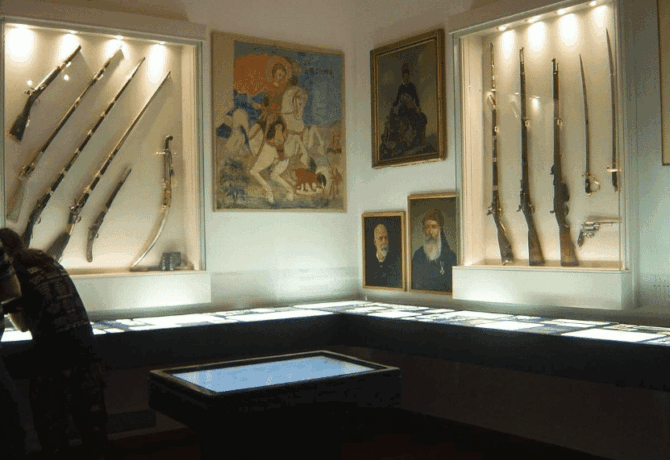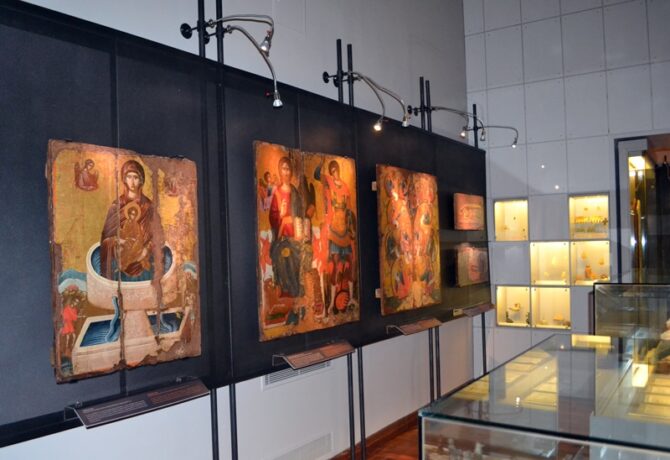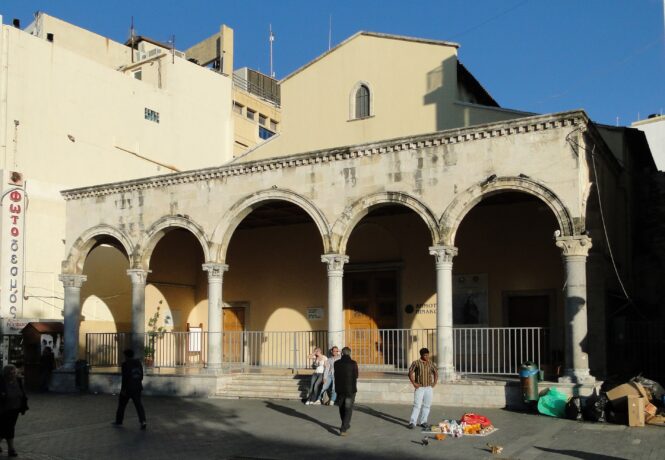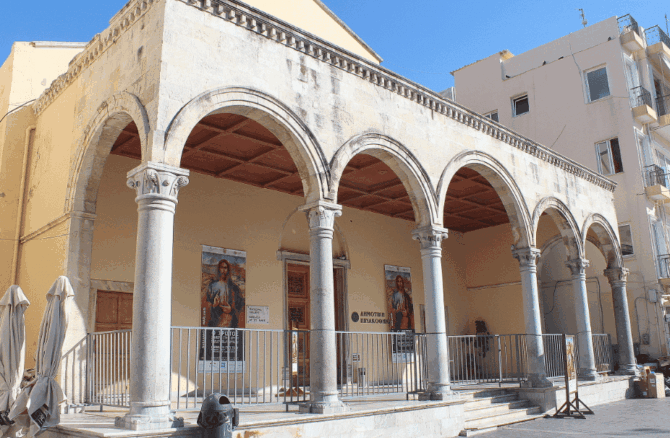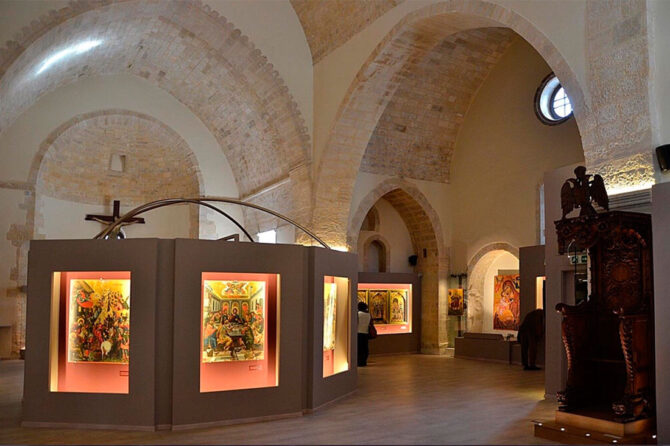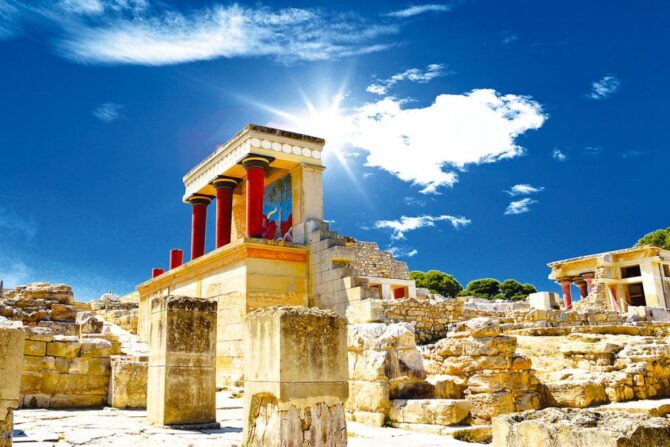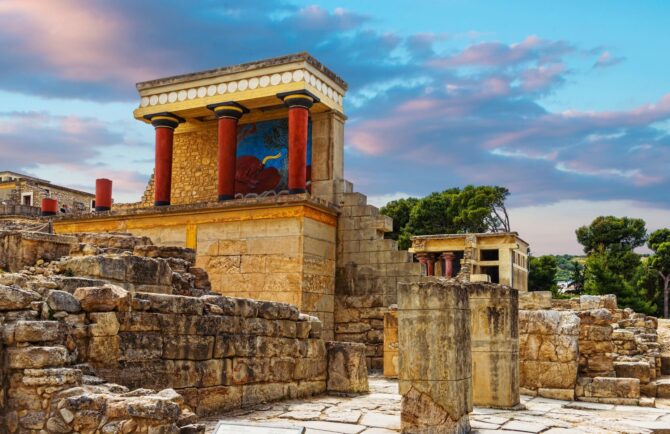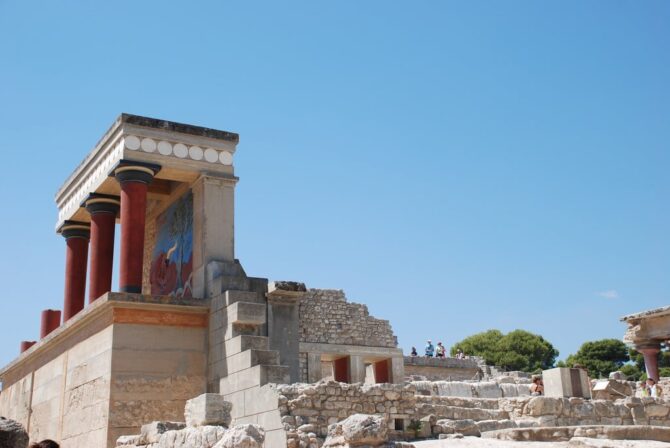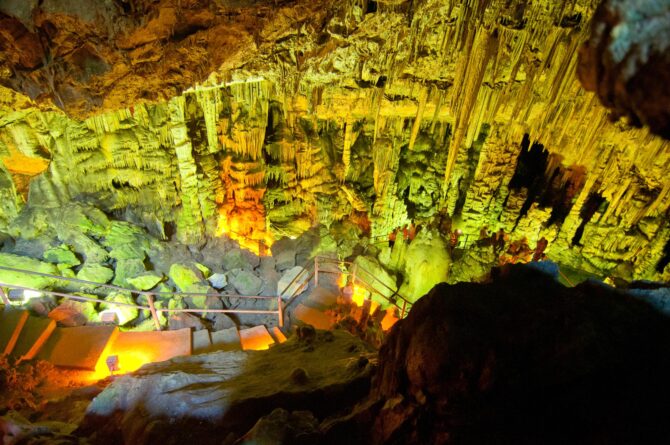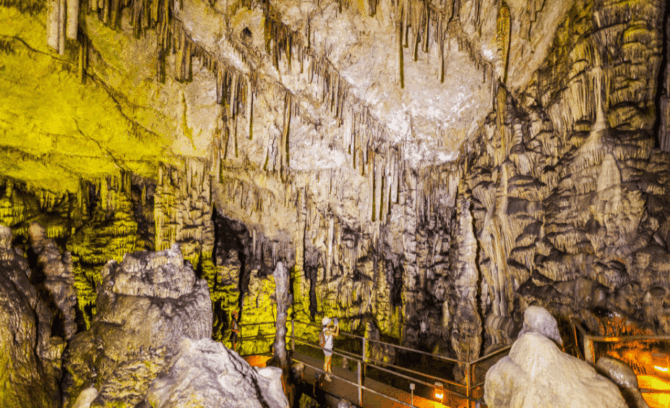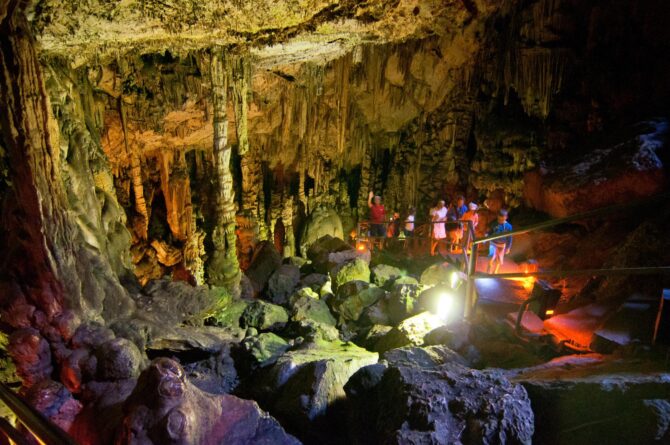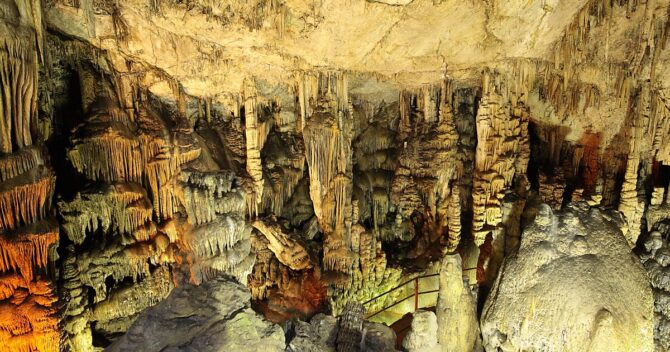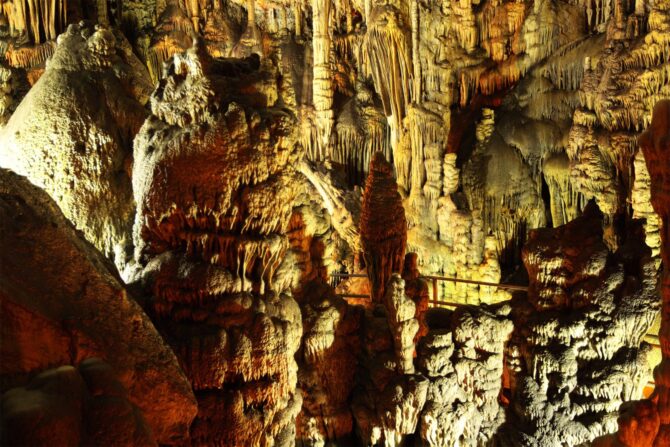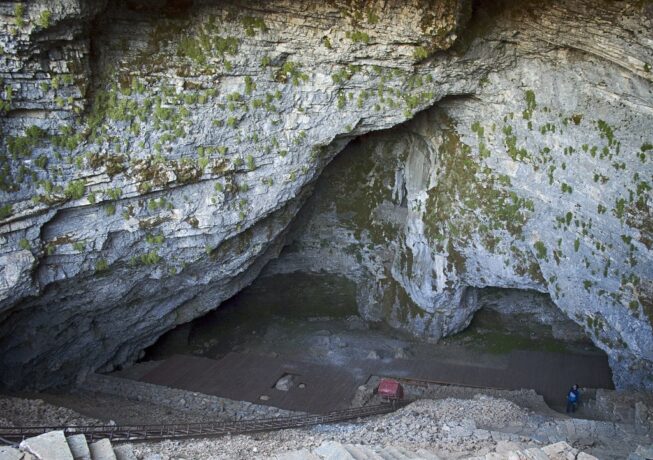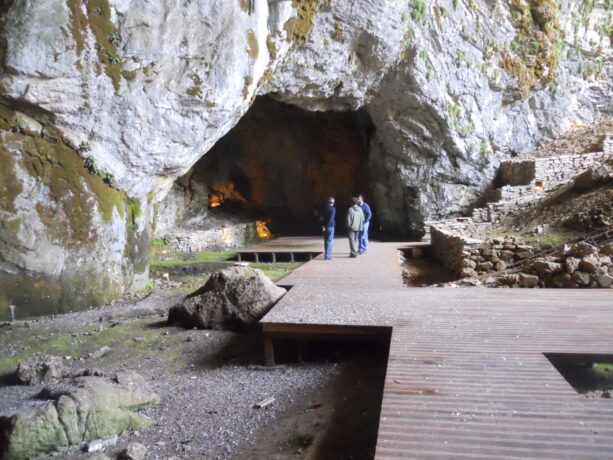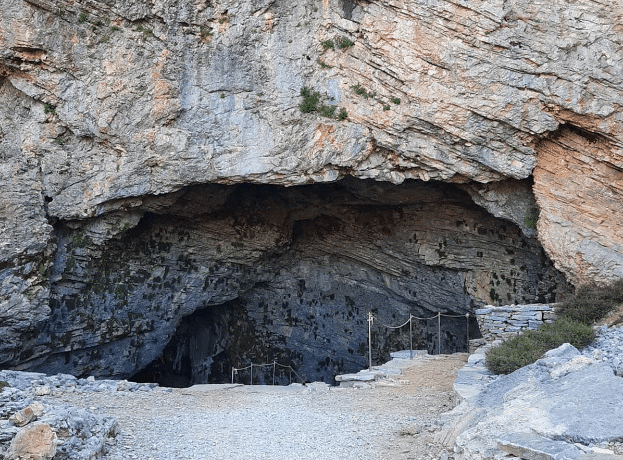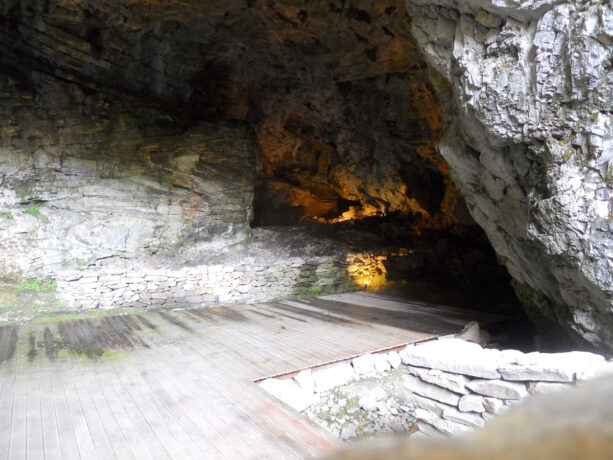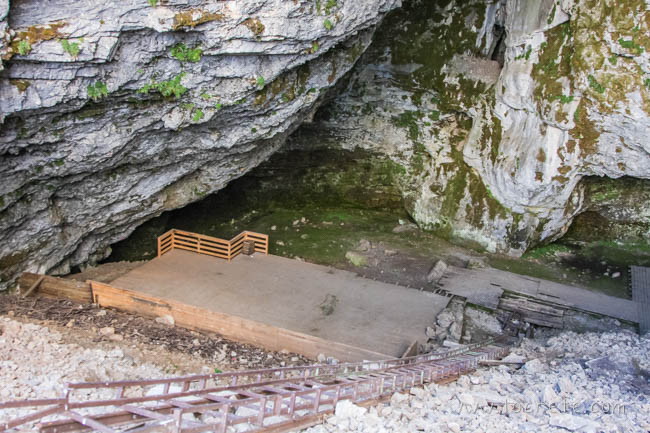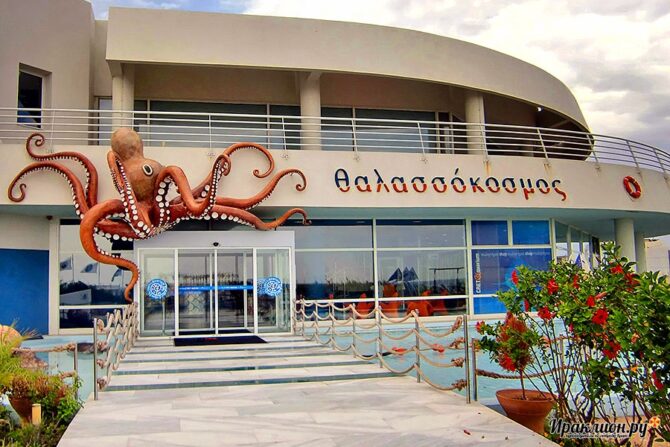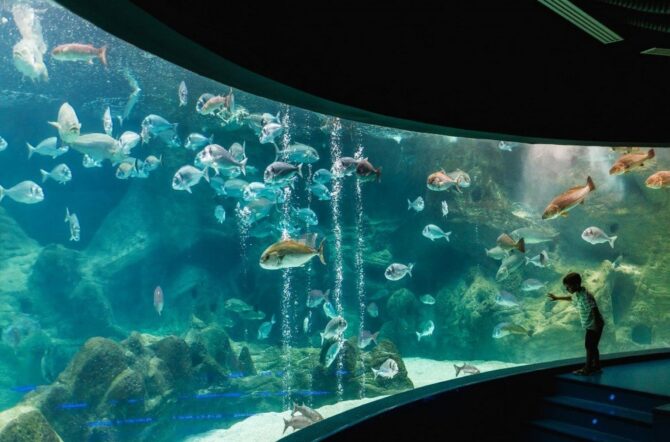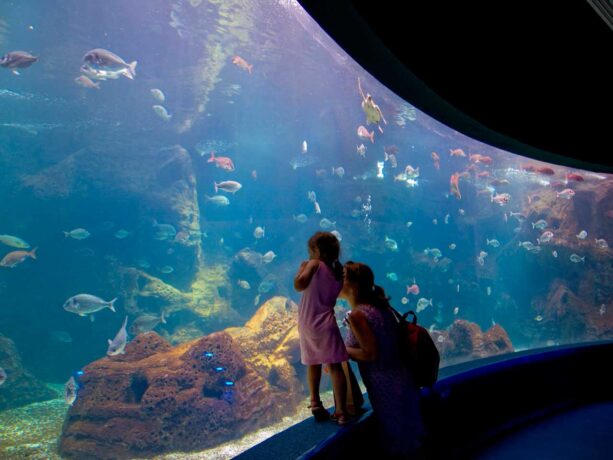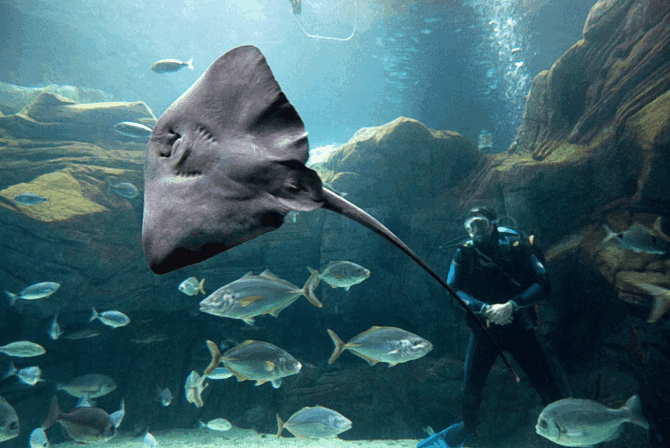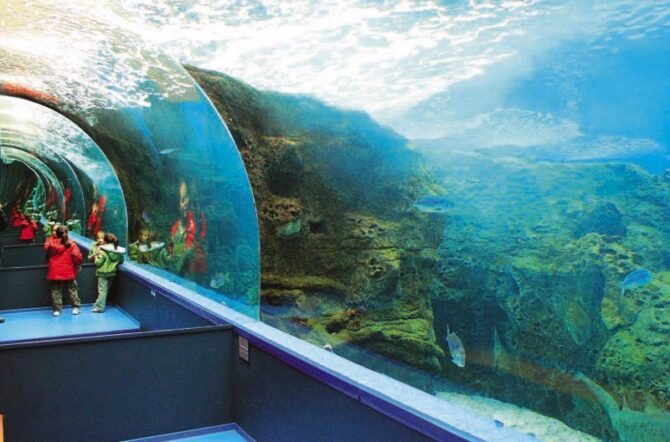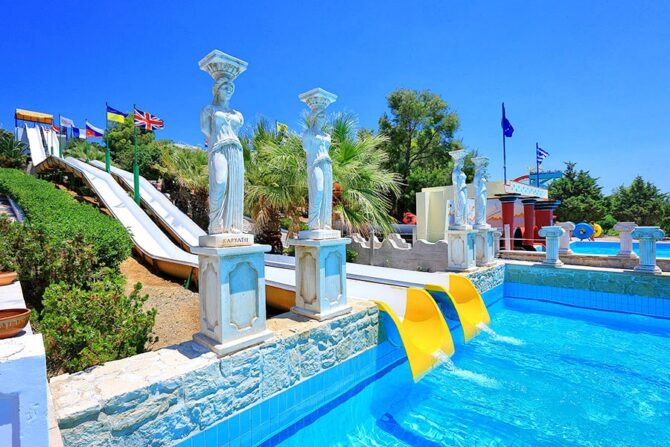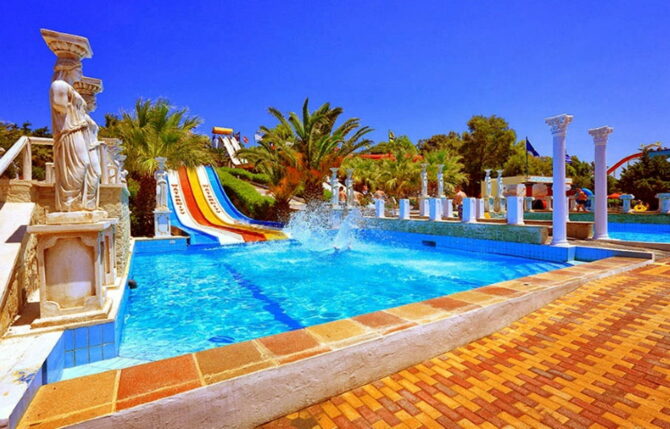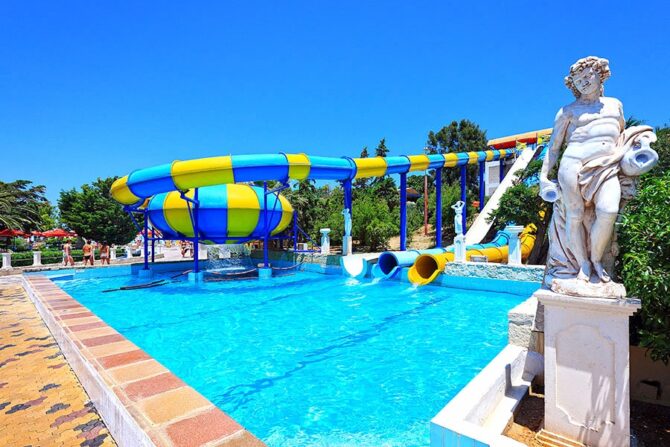The island of Crete is not another of the thousands of Greek islands, it is a mini-state with its own history, dialect, mentality and way of life. The administrative center of Crete and the main port of the island is Heraklion, a city named after the ancient Greek hero equal to the gods – Hercules, the birthplace of the great El Greco and the center of the Resistance during World War II. Heraklion knew different times: it was called Khandak, Candia and Heraclea, belonged to the Greeks, Arabs, Venetians and Turks, lived under the pirate flag, built walls, withstood sieges, traded and fought. Now the violent winds have died down, modern Heraklion is a quiet town with a population of slightly more than 140 thousand, a tourist center that is rightly proud of its history and attractions.
Tourists go to Heraklion for this – to see the greatness with their own eyes, swim in the warm water of the Cretan Sea, sunbathe on the rocky beaches, walk along the narrow streets and wander through the local shops. And, of course, try the Cretan cuisine – fried snails, soft goat cheeses, freshly caught fish, the famous puff pie with spinach spanacopita, simped lamb cigaristo and, of course, dakos. They say that in Heraklion it is made in a special way, not in the same way as in other Greek cities.
- 1 Attractions Heraklion on map
- 2 Where to park your car in Heraklion and why there may be problems with it
- 3 Fisherman’s Harbour
- 4 Venetian fortress Koules
- 5 Venetian docks
- 6 25 August Street – old town and modern shops
- 7 St. Titus Cathedral
- 8 Venetian Loggia
- 9 Morosini Fountain on Lion Square
- 10 Church of St. Catherine of Sinai (Museum of Religious Art)
- 11 St. Mina’s Cathedral
- 12 Bembo Fountain and 1866 Street with access to Cornaru Square
- 13 Dedalus Street
- 14 Freedom Square
- 15 Archaeological Museum
- 16 Museum of Natural History
- 17 Historical Museum of Crete
- 18 Museum of Fine Arts (Museum of Visual/Contemporary Art)
- 19 Palace of Knossos
- 20 Psychro Cave
- 21 Cave of Ideon Andron
- 22 Aquarium of Crete
- 23 Water City Water Park
Attractions Heraklion on map
Where to park your car in Heraklion and why there may be problems with it
Heraklion is a city completely unfriendly to cars (however, like any seaside Greek settlement). First, narrow densely built up multi-level streets, on which it is impossible to warm up even for small car, are constantly interrupted by dead ends, terraces and steps: the inhabitants of Crete are primarily Greeks. And the Greeks treat maps, markings and rules in general condescendingly.
Secondly, with parking in the city is tight – they are filled by tourists from all over the continent on their own and rented cars. In season (and in Crete the season, by and large, all year round) to find a free parking space near the popular attraction is an interesting, but often unpromising quest. Count on the sites near the most visited tourist places is not worth it, they will be filled with transport of agents, employees and excursion buses.
The city has paid and free parking, they are all controlled by the staff. There are no spontaneous in Crete.
Free parking addresses:
- Giannikou, 71201, near the Venetian fortress wall and the tomb of Nikos Kazanzakis;
- Mausolou & Irodotou, 71601, in a residential area, close to many shops and shopping centers;
- Ikarou 26, 71306, near the central bus station and across the street from the Museum of Archaeology of Crete;
- Karterou 22, 71601, a couple of hundred meters from Cornaru Square.
But (and this is very important), still an independent tourist without a car in Heraklion nowhere: the city is located on the territory of about a hundred square kilometers, plus many beaches and attractions are slightly removed from the city limits. Walking in the summer sun – no health is not enough, would withstand walks in the center, and from public transport in Heraklion only buses. Local taxi is a separate type of extreme, besides quite expensive.
What in no case can not be done:
- Try to save money and out of habit throw the car on the side of the road, at the curb, under the municipal building. In the EU, parking is possible only where it is allowed, and not where it is not prohibited. Local police are vigilant, and therefore you should not expect that it will carry, and under the janitors will not slip a receipt with a fine of euros for 80. And the wonders of technology should not be discounted: on the cameras, Heraklion is viewed along and across.
- Believe the markings on the asphalt, smiling guys and heart. The parking lot is indicated by special signs, not yellow stripes on the road or an employee who waves his hands. This is generally a common type of earnings in Greece – to lure, to force to violate, to write out a fine.
- To put the car on the emergency, to go out for a minute – the Greek police have no heart.
By the way, if there is a choice, open or garage / underground parking, it is better to choose the latter. Summer in Crete is hot, most often very.
Fisherman’s Harbour
A tour of Heraklion should begin with its heart – the harbor, which has many names, but most often it is called Venetian in honor of the most successful period in the history of the city.
During the Venetian Republic, access to the sea was conveniently arranged to receive merchant ships, keep records, collect taxes and, if necessary, defend themself from attack from the sea. There was a pier, an embankment and docks, much (especially in the layout and the idea itself) has survived to this day. From the sea, the harbor is closed by an artificial dam, on which the fortress is located.
However, it is not for nothing that the locals also call the harbor Fisherman’s: it is filled with boats and fishermen’s boats, boats and yachts that are rented out to everyone who wants to fish or arrange a photoset in the open sea. There are also stalls and shops that work in the morning and not unsuccessfully sell freshly caught fish, mussels, octopuses.
In the evenings, it is very lively, stylized taverns work, street artists perform, magicians hold a variety of shows. The port area is considered a hot place, with the darkening of all the cream of the half-light of Heraklion slides here. This is not Sochi, in the evening with a child there is nothing to do here.
Venetian fortress Koules
Impressive even in modern times, the stone structure protecting the entrance to the harbor is located on an artificial pebble pier. The Venetians completed the construction in the middle of the XVI century, but instead of their name – Castello a Mare, the fortress was assigned the Turkish “name” – Kules.
Eight-meter battlements are impressive in themselves even from a distance, but if you manage to get inside – suddenly lucky and the fortress will not be closed for endless repairs, be sure to climb to the upper level. By the way, actions, cultural events and exhibitions are often held here.
From the fortress wall offers a stunning view of the city, the water surface, the piers and the port. The contrast is perfectly noticeable, how restless the outer sea is and how quiet it is in the harbor. Beautiful from here look the uninhabited island of Diya (it was here that Cousteau found the Minoan settlement of the Bronze Age) and Mount Psilorit (Ida). Opposite the fortress, on the other side of the harbor is a modern port with loading equipment, warehouses and a ferry. Cruise liners, bulk carriers, occasionally warships moor here.
Working hours:
- from 01.04 to 31.10 – 8.00 – 19.00, Monday closed, Sunday – admission is free;
- from 01.11 to 31.03 – 9.00 – 15.00, Monday is closed.
Address: Port Wenecki w Heraklionie
Price: from 2 euros.
Venetian docks
Monumental traces of former power – docks for the repair, construction and storage of combat and commercial vessels – are visible immediately through the harbor. These are huge stone arched structures – not ruins, but also not functioning buildings.
Previously, the docks were in the water, but over the past three hundred years, the level of the Mediterranean Sea has fallen. Now the buildings on land, and numerous curious take refuge under the arched vaults from the sun, are photographed against the background of ancient walls and write on them all sorts of stupid things, where without it.
Docks in Heraklion are called arsenals. In total, five of them have been preserved, although at one time there were 19. They were divided into three complexes, different in time of construction, authorship and application:
- Antichi is the oldest arsenal, completely destroyed by an earthquake in the XIX century. Now in its place are new buildings, mainly municipal and customs services.
- Vecchi, of which only one dome has survived, parts of the others are included in the exposition of the Historical Museum of Crete. In total, four arsenals have been preserved.
- Nouovi, completed at the beginning of the XVII century and equipped with the once largest reservoir in the city, is almost destroyed. One arsenal has been preserved.
The docks in Heraklion are treated without reverence. Directly above them hang hotels and just residential buildings, a meter is the city highway, and the historical significance of respected stones is reported only by a sign on the fence. Well, at least for viewing money is not taken.
Address: Leof. Nearchou, Iraklio 712 02, Greece
25 August Street – old town and modern shops
Immediately from the harbor begins the street, which you must walk, because without it there will not be a complete picture of the city. The main street of Heraklion is named after a sad event in the history of the island and the city: on August 25, 1898, the Turks staged a massacre, methodically destroying the Cretans, who were all referred to as traitors to the Ottoman Empire.
The street of August 25 in Heraklion stretches for a long time, a couple of kilometers, you can walk here only on foot and by the end of the trip – Dedalus Street, you will get tired. However, on the street on August 25, you can do everything that a tourist only dreams of – eat seafood, enjoy the sights, buy Greek honey as a gift to loved ones, drink coffee, make many spectacular photos and even dig into very decent drains. The only thing that will not be able to do here is to sit, give rest to the walking legs. There are few benches, and in catering establishments, of which there are hundreds everywhere, they are simply not allowed, you need to order something.
St. Titus Cathedral
Walking along the street on August 25, you will not be able to miss the cathedral near the Central Square, built in honor of the first bishop of Crete. According to church tradition, Titus, a follower and associate of the Apostle Paul, was a Cretan bishop until 107, that is, until his death.
After his death, he was recognized as a saint, and his body found peace in the cathedral in Heraklion. However, in the XVII century, leaving the outpost in the Mediterranean Sea, the Venetians, among other valuable things, took away the cancer with the remains. In 1966, the relic was returned. Now the relics of the saint are in the cathedral, to them there is a constant flow of pilgrims.
The council is active, refers to the Patriarchate of Constantinople. You can get to the service, put a candle, pray, but you must observe the Orthodox dress code. Opposite the entrance to the temple there is a small square with a fountain and two pairs of benches.
Admission is free, but donations to the church cashier are welcome.
Address: Pl. Agiou Titou, Iraklio 712 02, Greece.
Venetian Loggia
One of the most beautiful historical buildings of Heraklion is the Loggia, in the past the social and cultural center of the city, now it is a tourist magnet. A calm and beautiful place that will give a break in the shade and decorate the page in the social network.
The arched building of the Loggia was built in the first half of the XVII century by the personal decision of the legendary personality for Heraklion – Francesco Morosini. As a role model, they chose the Basilica of Palladio from Vicenza, which thundered during the Italian Renaissance as an original architectural masterpiece.
Entrance to the lower tier of the building is free, here you can admire the bas-reliefs of iconic people for the city. On the upper is the mayor’s office, there are guided tours.
Address: August Str 25, Iraklio 712 02, Greece.
Morosini Fountain on Lion Square
Venizilos Square, or as everyone calls it, the Lion, got its name from the famous fountain in the center – its bowl, from which water flows, is supported by four impressive figures of lions that symbolize Venice and its power.
And it all began in 1628, when the governor of Crete and protégé of the Venetian Republic, Francesco Morosini, personally opened the fountain. It would seem, you think, a fountain! Are there few of them in Venice, Crete or Greece itself? As it turns out, there are few of them.
This fountain became the final point of the grandiose water supply, which on the slope of the mountain delivered drinking water to the city center – more than 15 kilometers of complex communications and pipelines.
Since then, the fountain has been destroyed several times by wars and elements, but the inhabitants of Heraklion invariably restored it – by any means and for a lot of money.
Address: Pl. El. Venizelou, Iraklio 712 02, Greece.
Church of St. Catherine of Sinai (Museum of Religious Art)
One of the iconic temples of Heraklion – the Church of St. Catherine of Sinai, a “branch” of the monastery of St. Catherine of Sinai in Jerusalem – is located on a tiny square of the same name and is now inactive. Now the church houses a museum of religious art, in which the works of the famous Cretan icon painter, a follower of El Greco, Michael Damaskin (six works, including “Adoration of the Magi”) are of the greatest interest. Also here you can see the complete collection of art of Crete of the Byzantine and early post-Byzantine period, which belongs to the Cretan Archdiocese.
Schedule:
- high season (April-October inclusive): 9.30 – 19.30;
- low season (March-November inclusive): 9.30 – 15.30.
Sunday is closed.
Address: Karterou, Iraklio 712 01, Greece.
St. Mina’s Cathedral
On Venizelu Square is one of the largest Greek temples and the main cathedral of Heraklion – the Cathedral of St. Mina, which can accommodate eight thousand people. The temple is active, you can visit the service.
Mina Cathedral is the newest building among all significant temples, but it has already managed to become legendary. Basically, the stories concern the defenders of the cathedral from higher forces, who did not allow the destruction of the temple during the war with the Turks or bombing in modern times. Urban legends will gladly tell local guides who lead tours of all the monuments of the city.
Entrance to the cathedral is free.
Address: Agiou Mina 25, Iraklio 712 01, Greece.
Bembo Fountain and 1866 Street with access to Cornaru Square
The oldest fountain of the city of Heraklion is located on Cornaru Square, next to which passes a surprisingly pleasant shopping street of 1866. And they are simply a must-see!
First of all, the fountain: built in 1588 by Gianmatteo Bembo, the same architect who designed the famous fountain with lions, it attracts less attention, and in vain. It was this, though not so spectacular, that became the first, trial and successful project within the framework of the city water supply. On it, the engineer tested the work of pipelines, communications from a unique aqueduct brought to it. The Bembo Fountain is the first city fountain with free access to water. And it rightfully bears the name of the creator, as part of the gratitude from the people of Heraklion.
In addition, the fountain is simply beautiful – made of marble, decorated with decorative elements and a statue of the Roman period.
Literally three steps away – the street named after the Cretan Uprising of 1866 or just the street of 1866. It houses the Central Market and many shopping pavilions where you can buy souvenirs and not only:
- handmade products;
- honey, spices, herbs, tea;
- Cretan cosmetics and jewelry;
- cheese, butter;
- olives and olive oil;
- Ceramics.
The market is open in the morning, Monday is a day off. Shopping pavilions are open longer, but are closed on Sundays.
Address: Pl. Kornarou 2, Iraklio 712 01, Greece.
Dedalus Street
The bright pedestrian street, starting from the gate of Eleftherias and stretching to the fountain with lions, is named after the great ancient Greek master who once created the famous Labyrinth – Daedalus.
The street is famous for its music shops and coffee shops. Along you can find fragments of the Arab-Byzantine wall. Despite the stylized appearance, the entire street is the result of post-war development, the old buildings were completely destroyed during the fighting and guerrilla operations.
The historical value of The Street of Dedalus does not have, it is just beautiful.
Freedom Square
Every significant city in the world has its own freedom – somewhere it is a statue, somewhere an exhibition, somewhere a monument to the leader. And in Heraklion there is Freedom Square, and it is considered the agora – that is, the main, central square of the Greek city. It is really located on a small hill on top of the ramparts of the Venetian period.
There are many cozy establishments – clubs, cafes, hotels and in general the entire infrastructure is designed for the comfort and pleasure of the tourist. Nevertheless, it is on the open terraces of restaurants on Freedom Square that Greek businessmen make deals and toss millions.
The main advantage of the area is trees, a rarity for Greece in general and Heraklion in particular. It is shady, cool and do not want to leave, but from here opens a direct path to most of the main attractions of the city.
Archaeological Museum
In addition to the turbulent modern history, the island of Crete boasts a civilization that goes back thousands of years. Heraklion is the center of development of the oldest Crete-Mycenaean civilization, the forerunner of the Greek polis. You can see the monuments of the Minoan culture – the so-called Cretan Aegean civilization of the Bronze Age – in the famous Archaeological Museum, a mecca for all historians and archaeologists of Europe. The exposition of the museum will impress the layman: more than 20 halls (their number is constantly growing), covering the period from the VI millennium to the present day, everywhere there is something to see.
Very interesting:
- Neolithic Venus (goddesses of fertility) in Hall I;
- a unique, fabulous and mysterious Phaistos disc in Hall III;
- – Knossos ritones, the famous statuette of the Goddess with snakes in Hall IV
- labrys (the most famous axe from Arkalochori is also here), gold and vases in Hall VII;
- Zakros crystal and ceramics in Hall VIII;
- Larnaca in Hall XIII;
- frescoes in Halls XIV-XVI.
Sculpture of later eras, including Hellenic and Romanesque, is presented in the rest of the halls.
Being in Heraklion, and at least one eye not to run into the Archaeological Museum – well, it’s even worse than not seeing Montmartre or the Eiffel Tower in Paris.
Schedule: 8.00 – 20.00 without a break and weekends (Tuesday – sanitary day, the start of work is shifted to 10.00). The museum is closed for major state and Orthodox holidays.
Tickets & https://heraklionmuseum.gr/?page_id=1497&lang=en Rules
- From 1 November to 31 March: 6 €
- From 1 April to 31 October: 12 € (reduced 6 €)
There is a complex ticket (museum + palace in Knossos).
Official site: https://heraklionmuseum.gr/ (there is an English version).
Address:Xanthoudidou & Hatzidaki str. 712 02, Heraklion Archaeological Museum, Iraklio, Greece.
In addition to the Archaeological in the immediate vicinity of the historical center of Heraklion there are three museums, a visit to which will be remembered – artistic, historical and natural history. They are expected, but quite decent and informative expositions, and the price is low. So go ahead! Of course, if there is strength and mood.
Museum of Natural History
In 1981, someone at the main university of Crete (the same one that has the Skinakas Observatory on Mount Ida) decided that the island needed its own museum with dinosaurs and a stuffed brown bear. The mayor’s office and activists of Heraklion prepared for the Museum of Natural History the building of an abandoned substation near the sea in the area of the Venetian port. Thus began the history of the institution, which is designed to study, protect and care for the living world of the island of Crete in particular and the eastern Mediterranean in general. The museum, by the way, is very popular with schoolchildren.
Like any natural history museum in a civilized country, Heraklion takes scale. On 3.5 thousand square meters there are dozens (!) of exhibitions and expositions, aquariums, terrariums, an innumerable number of dioramas, growth stuffed animals and restored skeletons, stands from circles of local youths, herbariums, crafts and similar educational didactics. There is also a children’s development center, circles, laboratories and periodically held lectures. There are so many things that it is better to allocate at least half a day with children to visit.
Graph:
- 09:00 – 17:00 Monday to Friday
- 10:00 – 18:00 on weekends
Tickets: full – 7.5 €, children under 18 discount 3€.
Official site: https://www.nhmc.uoc.gr/
Address:Natural History Museum, Leof. Sofokli Venizelou, Iraklio 712 02, Greece.
Historical Museum of Crete
There is so much history in Crete that one Archaeological Museum is not enough for it. Therefore, in 1953, the Historical Museum was opened. Tellingly, in an interesting place – until the beginning of the XX century there was a mansion that really has historical significance. Nowadays, the Museum is located in a standard two-story building, which is offensively attributed to architectural neoclassicism.
You need to understand that the classical historical museum (and this one is just one of those) is for the amateur and for specialists. An ordinary citizen, and even with children, to consider crumpled coins, admire shards and chipped bas-reliefs … Well, somehow it is not always clear why so much to suffer on vacation.
From the fundamental: the Historical Museum of Heraklion houses the original of the Modena triptych of El Greco. To sincerely admire them, you need to understand the iconography.
Graph:
June 2 – October 31
- Monday, Wednesday, Thursday, Friday – 10.00-17.00.
- Saturday, Sunday – 11: 00-17: 00.
The rest of the time the museum ends at 15.00.
Tuesday is a day off.
Official site: https://www.historical-museum.gr
Address:Historical Museum of Crete, House A. & M. Kalokerinos, Leof. Sofokli Venizelou 27, Iraklio 712 02, Greece.
Museum of Fine Arts (Museum of Visual/Contemporary Art)
The Museum of Modern Art should be such – new on the basis of the ancient. The popular Heraklion Art Gallery, conceived by the municipality as a meeting place for contemporary artists, is housed in the building of the former St. Mark’s Cathedral, which was once the main cathedral of Cretan.
The pleasure of visiting directly depends on what is exhibited. There is no permanent exhibition in the Museum.
Graph:
- Monday – Friday:00 – 18.00;
- Sunday: 00- 18.00.
Admission is often free, for some exhibitions you need to pay, sometimes you ask for a donation.
More about the gallery on its page: https://www.facebook.com/pages/Vasiliki%20Agios%20Markos%20Municipal%20Art%20Gallery/877809805896985/
Address: Municipal Art Gallery, Pl. Kallergon 100, Iraklio 712 02, Greece.
If for some very good reason there is enough time, then we must not forget that in the vicinity of Heraklion there are iconic sights. They are a must see. Most of them are buses, and there are paid parking lots for cars.
Palace of Knossos
Nearby, literally on the outskirts of Heraklion, is the tiny village of Knossos, in which the ruins of the famous palace are located. This is all that remains of the once mighty capital of King Minos. Yes, the one who built the Labyrinth and imprisoned the Minotaur in it – maybe, if you believe the myths.
In fact, there was a palace here – around 2000 BC. What he was then, of course, no one knows. But it is known that it was destroyed by an earthquake.
In general, earthquakes are a landmark element for Knossos and, especially, his main palace. It is not known whether the Minotaur lived under it, but volcanoes, faults and the “breath of the earth” carried the palace along the stone countless times. Persistent residents and the ruling dynasty with the same perseverance restored everything.
The last time the unfortunate structure was laid out on atoms by the Dorians at the end of the Bronze Age. The palace itself has since been forgotten and abandoned, and Knossos remained a regional center and comfortably existed for many hundreds of years.
In general, now in the village of Knossos everything is subordinated to the tourist business, and the unfortunate palace too. Do not particularly admire him – this is a remake built on cement by excavators with the help of quite modern technologies. All that can be seen, felt and photographed is the embodiment of fantasies and insinuations on the topic of what the Palace of Knossos could look like. To really existed before the Dorians building modern “palace” has nothing to do.
Entrance to the site is paid, the price varies from season to season and tenant.
Address: The Palace of Knossos, 8, Iraklio 714 09, Greece
Psychro Cave
To get to the legendary Dikteyskaya cave, you will definitely need a car – it is located almost 60 kilometers from Heraklion. Or you will have to buy a tour in the agency and go to Dikti organized tour – by the way, it is really convenient. Uphill you need to climb a steep path – you can pawn, you can on donkeys that stand like concordes: the locals have long understood that you need to forge a tourist while he is hot … or rather, tired and does not want to climb up the heat. That is why the entrance to the cave is paid.
Either way, the cave is nice and looks like a cave. If you need to urgently see the place where the goddess-progenitor Rheya hid children from their father, Kronos, who practiced infantocide coupled with cannibalism. It is believed that Zeus was born by Rhea and immediately safely hidden in this cave.
The cave is impressive, and the views from the observation deck are even greater – after all, the height is 1025 meters above sea level. It is also cold and slippery, you need warm clothes and comfortable shoes.
Address: Psychro Cave 720 52, Greece
Cave of Ideon Andron
In Crete, there is another cave where, perhaps, Zeus was born – after all, the main Olympian deity, so part of his biography is covered with secrets. In Mount Ida there is a cave, respectively, Ideyskaya. There, at an altitude of 1538 meters, there is an entrance, but it is not easy to get to it at all – a mountain serpentine and not the best road in the region.
Zeus is Zeus, but it is known that Ideon was used as a place of sacrifice during the Minoan period. It’s not as spectacular as Psychro, but it’s worth a visit.
Address: Idaean Cave, Nida, Greece
Aquarium of Crete
If not museums and ruins, then what? That’s right, Aquarium of Crete! One of the largest and most spectacular aquariums in Greece is located in Crete, in the town of Gourna, 15 km from Heraklion. Located on the territory of the former base of the US Air Force, a completely new one – built in 2005. Together with the children here you can hang out for the whole day, especially there are enough places where you can have a snack and a decent (paid) parking works.
Graph:
- 11 – 31.03: 9.30 – 16.00 hours;
- 04 – 31.10: 9.30 – 19.00 hours.
The aquarium is open 365 days a year, 7 days a week without days off and holidays, but honors quarantine prescriptions.
Tickets:
- full 10 €;
- children 4-17 years old and people after 65 – 6€;
- children under 4 free of charge.
In winter season 01.11-31.03 all tickets are 6€.
Official site: https://cretaquarium.gr/
Address: Cret Aquarium, Heraklion 710 03, Greece.
Water City Water Park
For some, the sea is not enough in Crete. For such capricious tourists, there are water parks – with attractions, restaurants, salons and many other entertainments that are more familiar to modern man. One of the largest in Crete – an open complex entertainment center Water City – is located near Hersonissos, 30 minutes from Heraklion (about 27-30 kilometers). On its territory there is everything that a tourist is accustomed to when traveling to comfortable hotels of about 4 stars.
Schedule: seasonal, the water park opens in May and closes closer to mid-October.
Open 10:00 – 18:00.
Official site: https://www.watercity.gr/ru/watercity.php
Address: Anopolis, Heraklion, Crete, Greece.
The city of Heraklion is a wonderful place where the true Mediterranean Creto-Greek spirit lives. It is beautiful, the situation relaxes and motivates, even despite the grumpy natives and all-consuming heat. By the way, the best time to go to Heraklion is hot and rich in seafood and gardens in October, and not the summer months. And one day for the city of Hercules will not be enough – at least a week, and no less.




